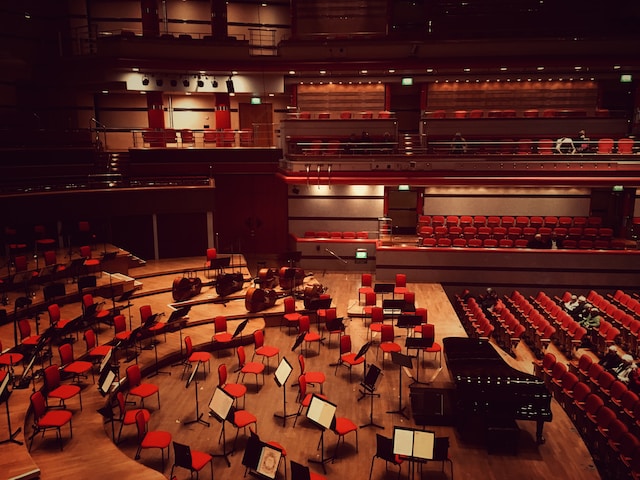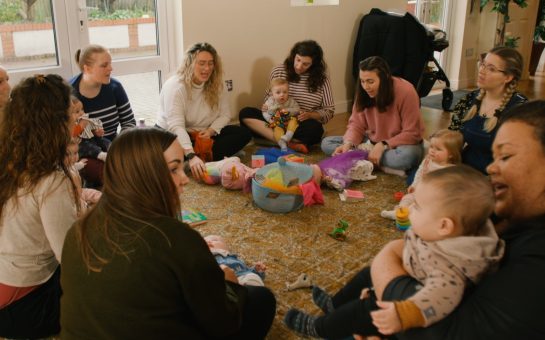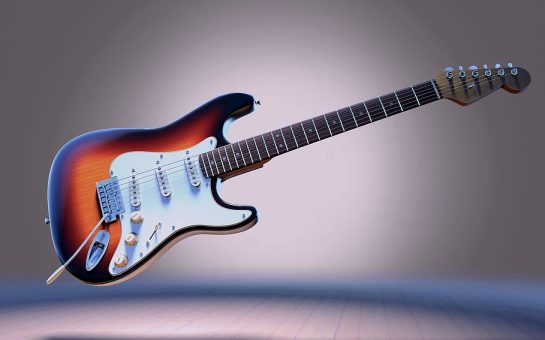Daily engagement with orchestral music is on the rise and it’s because of young people, not their parents, according to a report from the Royal Philharmonic Orchestra.
Specifically, two thirds (65%) of under 35s are listening to orchestral music on a regular basis – a 6% increase on 2018 (59%), and overtaking over 55s (57%).
The report, published earlier this year, suggest that orchestral music is continuing to prove its timelessness.
James Williams, Managing Director of Royal Philharmonic Orchestra, said: “I think what this shows is that orchestral music is playing a key part of people’s lives.
“It reverses the traditional narrative that orchestral music is an older art form, and therefore exclusively appeals to older generations.”
Contrary to prevailing myths, orchestral music doesn’t need to become something else in order to appeal to younger listeners.
If anything, it’s ‘traditional’ composers which excite young listeners the most.
Reacting to the report, Tim Pottier, Head of Programmes at The Centre for Young Musicians, said: “I was surprised in how conventional the choices were of what people liked. It was very much Mozart, Bach, and Beethoven.”
Julian Hardwick, Chairman of Stoneleigh Youth Orchestra, said: “The findings are clearly very encouraging, particularly given all the competing genres.”
OK, but why?
As mental health becomes a growing cause for concern amongst young people, their rising interest in orchestra suggests the music have some ‘therapeutic’ properties.
The report suggests that young people are listening to orchestral music as a means of dealing with stress – a tendency which saw a sharp rise throughout the Covid-19 pandemic.
However, whilst this may partially explain orchestral music’s growing popularity with younger audiences, its appeal cannot be reduced to its ‘therapeutic’ properties.
Williams said: “For them, it’s something that kind of centres them as human beings and gives them an opportunity to step out of the sort of maelstrom of daily life.
“But not all orchestral music is therapeutic by any stretch of the imagination – some of it is quite terrifying!
“As a genre, orchestral music can evoke a very wide range of emotions.
“The sheer power that orchestral music can take you from being utterly spiritually elated and moved to tears to utterly shaking-in-your-seat terrified.”
Whilst it’s technically true that orchestral music is being used to bring tranquillity to the otherwise turbulent lives of young people, it’s not the overriding reason for its appeal.
Rather, the report suggests that the genre’s rich depth and ‘kaleidoscopic’ variety is having an impact, as the more a genre can do, the more people it can cater to.
Williams said: “Typically, an orchestra is made up of nearly 100 musicians, meaning it provides a certain depth and variety of sound, which is something you simply don’t get from a five-piece pop band.
“But it’s just a very different sort of beast, so it’s really hard to say one is better than the other.”
However, it’s not just the genre’s diversity which generates interest – technology has played an important role in exposing new listeners to orchestral music.
Streaming services have been integral in providing younger generations with a convenient and immediate entry point to the world of Tchaikovsky, Elgar and Mahler.
Harwick said: “Technology makes orchestral music very accessible, very quickly. It’s right there in front of them, no need to schedule or plan for a concert.”
New technology, combined with an appetite for older music forms, has made orchestral music the fastest growing market in online music streaming.
Unsurprisingly, this spike in streaming came during lockdown, around which time the report suggests that orchestral listening became a household activity, not merely something on the commute to work.
Current listening trends are expected to continue as orchestral music adapts itself to mediums which ensure the art form remains relevant to younger people.
Whether it’s through television or film, art galleries or video games, orchestral music is finding a multitude of new ways to reach the ears of its future connoisseurs.
Whilst it’s clear that younger listeners are becoming exposed to orchestral music in different ways to previous generations, the report suggests it’s too early to know if this will lead to a new generation of musicians.
Contrary to certain presumptions, the challenge of the orchestral world isn’t about getting younger people into orchestral music.
Rather, it’s about getting young people into the concert hall, either as part of the audience or as part of an orchestra.
From streaming to spectating
As one might expect, especially when accounting for the pandemic and post-pandemic environment, younger people tend to listen to orchestral music in and around the house.
The report showed participants between the ages of 18 and 34 listened to orchestral music whilst cooking (17%), doing housework (17%), reading (13%), working (13%), going to sleep (11%), exercising (11%), bathing (10%) and gardening (10%).
Amongst this age bracket, the most common activity engaged in whilst listening to orchestral music was travelling (19%), with a minority of young listeners engaging with orchestral music in a concert hall (12%).
Pottier said: “It was very much what activities they might be doing when they listen to music. It wasn’t so much about attending a concert and maybe listening to it in a very focused way.
“Orchestral music appears absolutely everywhere in life at the moment. but people don’t have much exposure to that sound of a live orchestra when they’re younger, especially the generation that’s been through the pandemic.”
As such, orchestras are trying to introduce new ways of experiencing orchestral music to its young converts – they want to transform orchestral from background noise into collective euphoria.
Specifically, orchestras are using social media to cultivate a sense of FOMO or fear of missing out.
Enabled by orchestral music’s diversity, each live performance can be different to the last, allowing orchestras to portray each live performance as a once in a lifetime experience.
By doing this, orchestras hope that younger listeners will muster the will to make the jump from streaming services to the spectacle of a live orchestra.
Whilst performances might not technically be once in a lifetime, the gap between them can last roughly half a decade – meaning that the FOMO is more real than any cheap PR illusion.
Given this, orchestras are looking to make the most out of the immediate post-lockdown period, hoping to tap into desires for collective experience after years of isolating.
Williams said: “Pre-Covid, it was very much on the commute to work, that’s when people really use that time to explore that and expand their musical horizons.
“Now, it’s very much around home-based activities because, of course, the working from home culture and all that.
“Post-Covid, there has been a real hunger and appetite and particularly from younger audiences, for a community experience, something everybody experiences live at the same moment in the same space.”
An integral component of this process involves tackling myths about who can attend a live orchestral performance.
From audience to orchestra
Despite their passion for the music, younger listeners are often unable to translate their passion from passive enjoyment to active participation.
This is because younger people haven’t had a high-quality music education and whilst an education isn’t required to enjoy orchestral music, it’s certainly required to make it.
The process of forming an orchestra has rapidly changed over the past few decades, creating various entry points for people to enter the world or orchestral music, to ensure that the genre keeps pace with a changing society.
Williams said: “In the old days, it was just the very traditional route.
“That’s all changing. I think there’s a real conversation now, between young musicians, orchestras and, of course, audiences about not just what we do, but how we present it, so that orchestras don’t become museum pieces.”
However, musicians warn that children are still being denied a proper musical education.
Also, whilst musical programmes can provide an alternative pathway into orchestra, the ‘success-story’ programmes are largely provided by the private sector, creating a price barrier for aspiring young musicians.
Pottier said: “The music projects that are kind of shouted about are slightly tokenistic. There are those isolated projects, but extraordinary success stories today rely on a lot of private funding. They’re not getting government funding.
“As such, musical education provided across the board in schools, by government level locally and nationally, has disappeared. It’s more or less dried up.”
Earlier this year, the BBC sought to scrap its English orchestras, a move which would have reduced roles in the BBC Symphony, Concert and Philharmonic orchestras by 20%.
Although the proposed cuts were eventually reversed, there is still a great sense of uncertainty around the viability of becoming a full-time musician.
This is due to combination of fewer places, the causation of work, and the tendency to re-use the same musicians, regardless of genre.
Pottier said: “The traditional ‘I want to be the contracted musician for a certain organisation’ has disappeared, or if not disappeared, then it’s diminishing year by year with the move towards freelance.
“The same people working on the pop tracks are the people doing completely different things. They’re getting all the jobs, so it’s hard for young musicians to find breathing space to work in that world.”
The future of young orchestra
The current trend appears to be stable for now.
Young people will continue to enjoy orchestral music for a multitude of reasons in a multitude of ways.
As such, it can be expected that more and more young people will try to pursue orchestral music but this is something easier said than done.
Whilst early life encouragement provides a helpful head start, it has yet to produce a great musician by itself.
Hardwick said: “It often starts with family. Parents will encourage them to play instruments. That’s clearly very important, as well as good music provision.
“However, if you want to perform music to a high standard you have to practice. Encouragement is good, but to achieve proficiency you need to be totally committed.”
Connections, education, resources – all these things are beneficial, to some extent or another, but passion is ground zero – and if the report tells us anything, there’s certainly no shortage of it.





